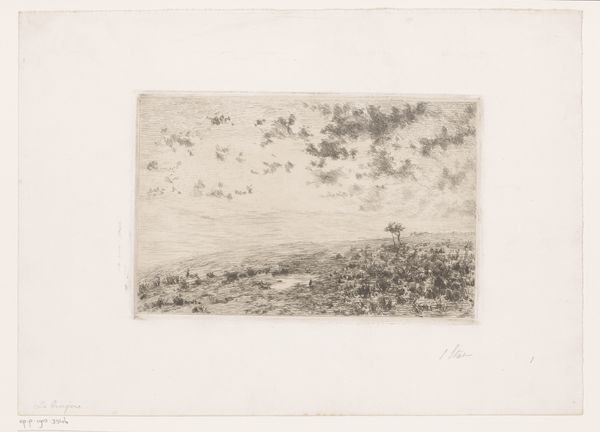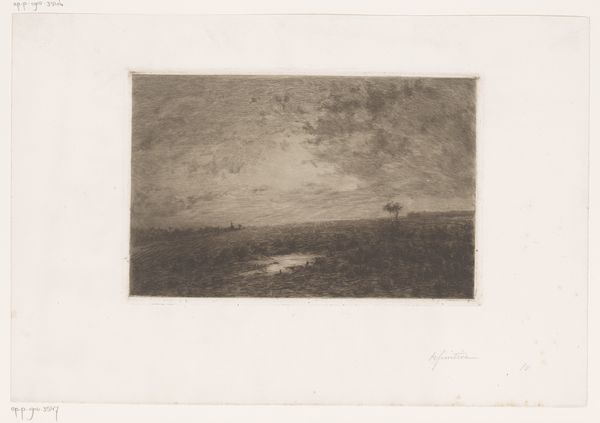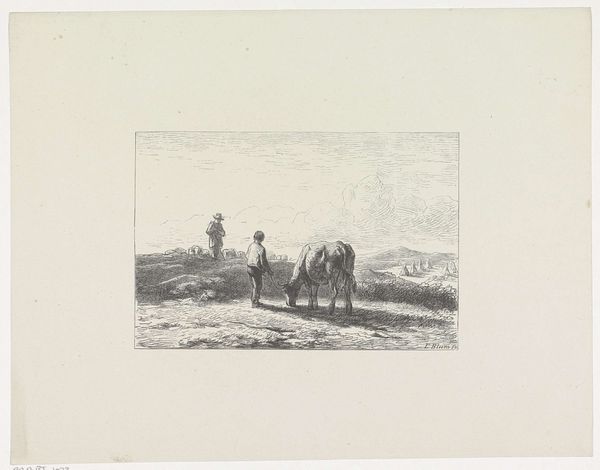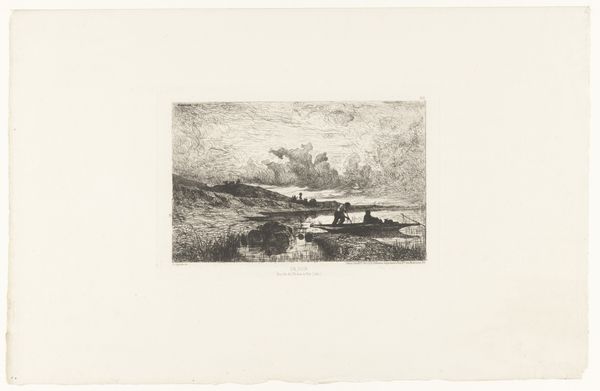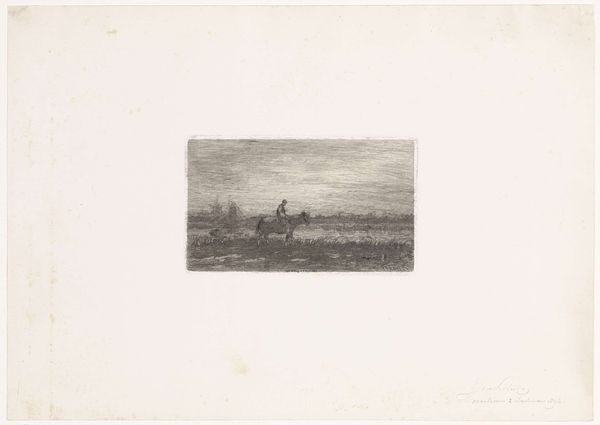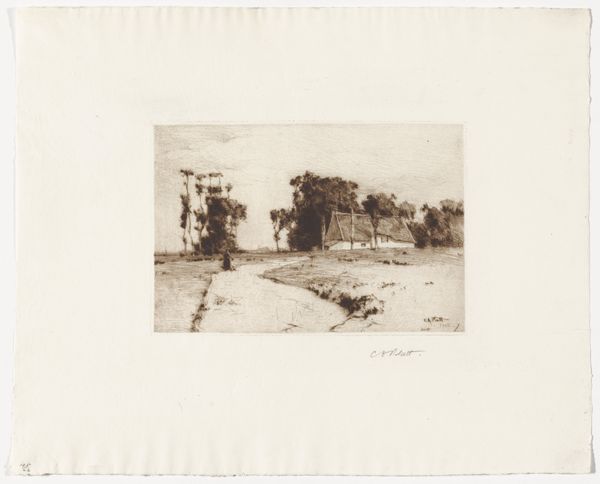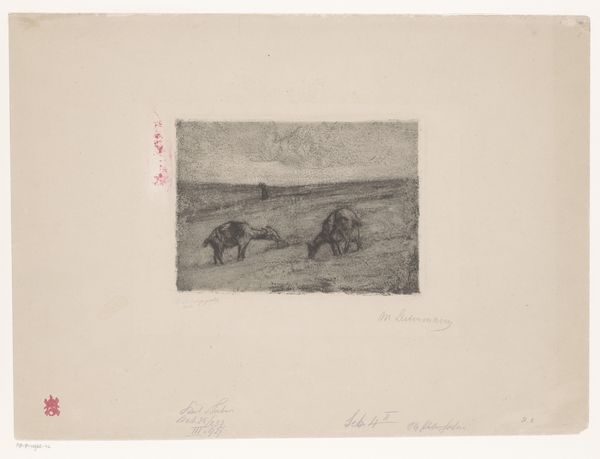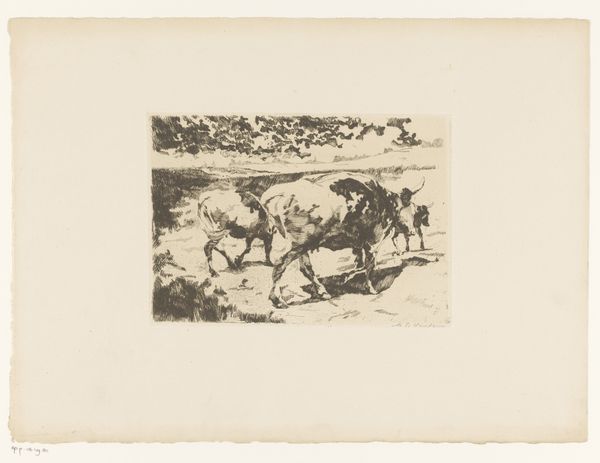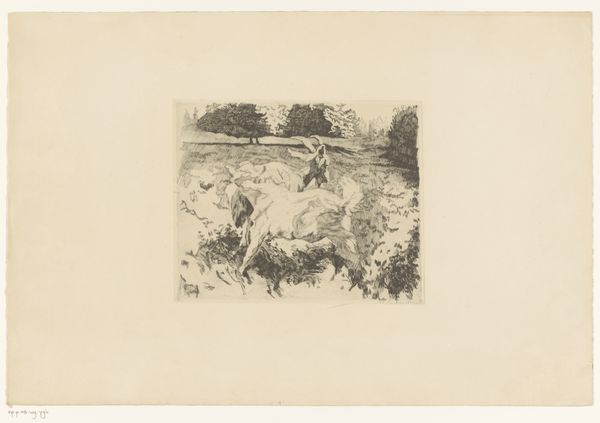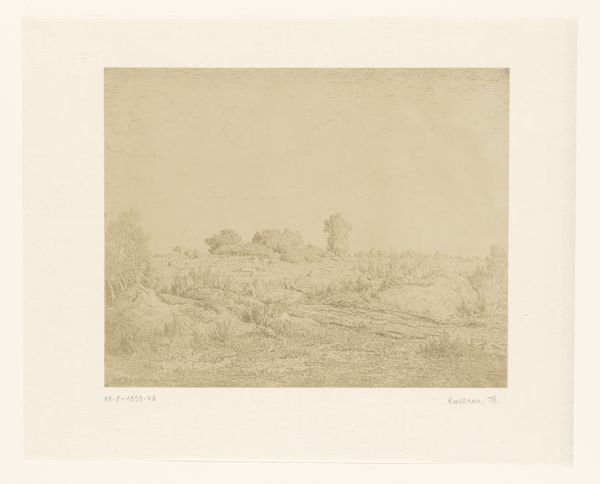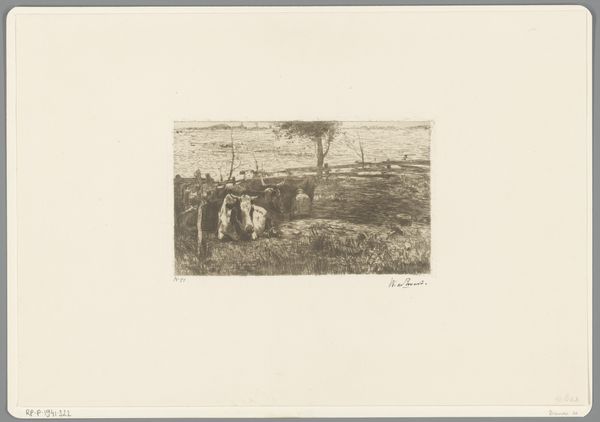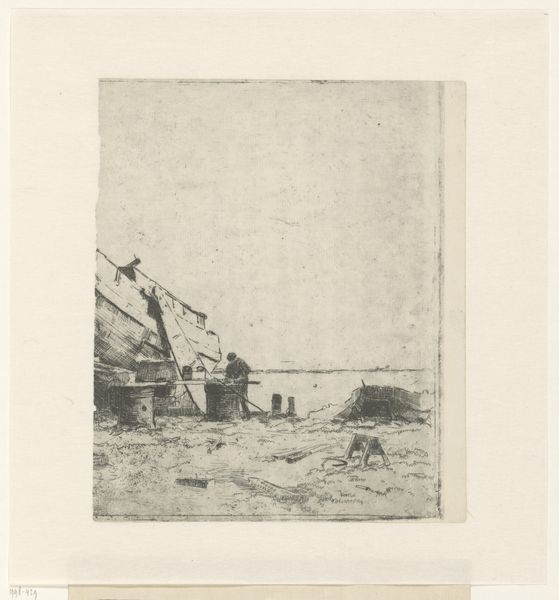
Dimensions: height 265 mm, width 435 mm
Copyright: Rijks Museum: Open Domain
Curator: "Jaagpad," which translates to "Towpath," crafted sometime between 1903 and 1920 by Stoomsteendrukkerij Senefelder, arrests me with its subdued atmosphere. Editor: It does have a rather melancholy quality, doesn't it? A solitary figure on horseback, almost swallowed by the muted landscape. I can’t help but wonder, what does the landscape stand for in this work? Curator: Landscapes during this period became invested with social significance. We're exiting the peak of industrialization and seeing a rise in agrarian imagery meant to re-establish a romantic connection to the land, even a yearning for a pre-industrial past. Editor: Right. Looking closely at the way this landscape is realized with etching and print, I think about access and how it has changed between now and the turn of the century. Who had access to horses, and to landscape scenes such as these? How does class play out? Curator: Good point. Senefelder utilized the relatively novel medium of steam-powered printmaking. The rise of industrial printing made artwork more accessible to a broader public, democratizing art consumption beyond the elite. Consider the impact of photographic journals in social movements or mass political participation at the time. This landscape then becomes accessible on a mass scale. Editor: Definitely, and with that in mind, the image resonates with a poignant quietness. Despite its scale as an accessible print, it evokes intimate contemplation, reminding us of individual journeys intertwined with collective experiences and societal changes. Curator: Precisely, an illustration that captures not only a place, but a pivotal transition in the way that the very masses were consuming, experiencing and seeing their present moment. Editor: Well, on that note, let's venture forth on our own respective towpaths! Curator: Indeed, towards our next destination.
Comments
No comments
Be the first to comment and join the conversation on the ultimate creative platform.
